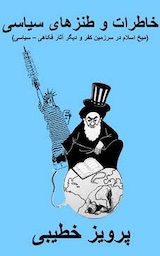Vlog
Viroon 's Recent Videos
: ‘I was under direct assassination threat’: Irwin Cotler on alleged Iran plot
Viroon | one hour ago
0 37
: Iranian woman detained over undressing is released without charge | BBC News
Viroon | 2 hours ago
0 37
: Exploring a one-of-a-kind 17th century Mughal hunting coat
Viroon | 2 hours ago
0 36
‘I was under direct assassination threat’: Irwin Cotler on alleged Iran plot
Viroon | one hour ago
0 37
Category: None
Iranian woman detained over undressing is released without charge | BBC News
Viroon | 2 hours ago
0 37
Category: None










Comments